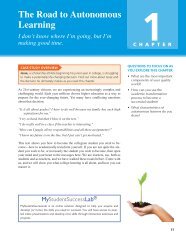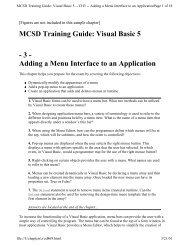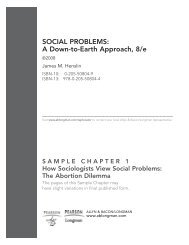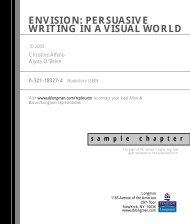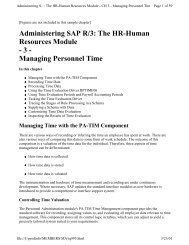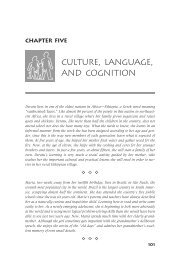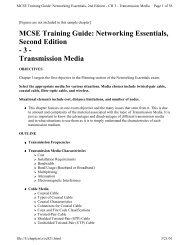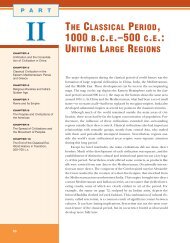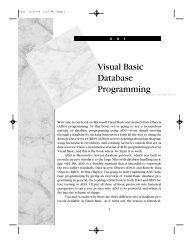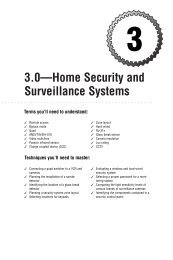Special Edition Using SAP R/3, Third Edition
Special Edition Using SAP R/3, Third Edition
Special Edition Using SAP R/3, Third Edition
Create successful ePaper yourself
Turn your PDF publications into a flip-book with our unique Google optimized e-Paper software.
<strong>Special</strong> <strong>Edition</strong> <strong>Using</strong> <strong>SAP</strong> R/3, <strong>Third</strong> <strong>Edition</strong> - CH 3 - Exploring R/3 Architecture Page 18 of 26<br />
elements are not changed by any other application in the period between the dialog operations and the<br />
consequent database updates. For example, an order accepted on the basis of material in stock relies<br />
on that material still being available when the database is updated to mark it as reserved for the<br />
specific order. Another ordering system cannot be allowed to reserve the same material in the interim.<br />
The R/3 system alerts the user if there is going to be potential competition for access to the same<br />
record. The second request is refused until the first is satisfied.<br />
When the log record generated by the dialog is used to update the database, the update program<br />
automatically removes all the locks that were put in place during the transaction.<br />
Memory Management<br />
There are two types of main memory:<br />
Reserved main memory areas exclusively at the disposal of a particular work process<br />
Shared main memory areas used jointly by all work processes<br />
The reserved areas are used to store mode-specific data that needs to be retained for longer than a<br />
single work step. Before R/3 Release 3.0, two areas are distinguished by how they are used: roll and<br />
paging.<br />
Roll Area of Reserved Memory<br />
Data that is made available to a work process automatically at the beginning of a dialog step is rolled<br />
into a reserved area of memory. At the end of the dialog step, this data is rolled out to be returned to<br />
the database, if necessary. The memory released then is available for other processes.<br />
The roll area of memory is reserved for the exclusive use of a specific work process while it is active.<br />
Some of the types of information that use roll memory follow:<br />
Data specific to the particular user, including access privileges and identification<br />
Entry data previously collected by steps of the dialog that have already been completed<br />
Management information required by the two processors for ABAP/4 and dynpro activities<br />
Paging Area of Reserved Memory<br />
The paging areas of reserved memory can be used by applications to store extensive collections of<br />
data that may vary greatly in length. The paging areas are accordingly organized into segments<br />
assigned to a work process when they are needed and withdrawn when they are needed elsewhere.<br />
Managing the Roll and Page Memories<br />
When each processing step is complete, the contents of the reserved roll and paging areas are<br />
buffered in two shared memory pools. The shared memory areas are used as buffers for database,<br />
program, and table operations. Both pools are within the system’s virtual address space, and the<br />
file://J:\prodinfo\MEMBERS\MA\ir057.html 3/23/01



